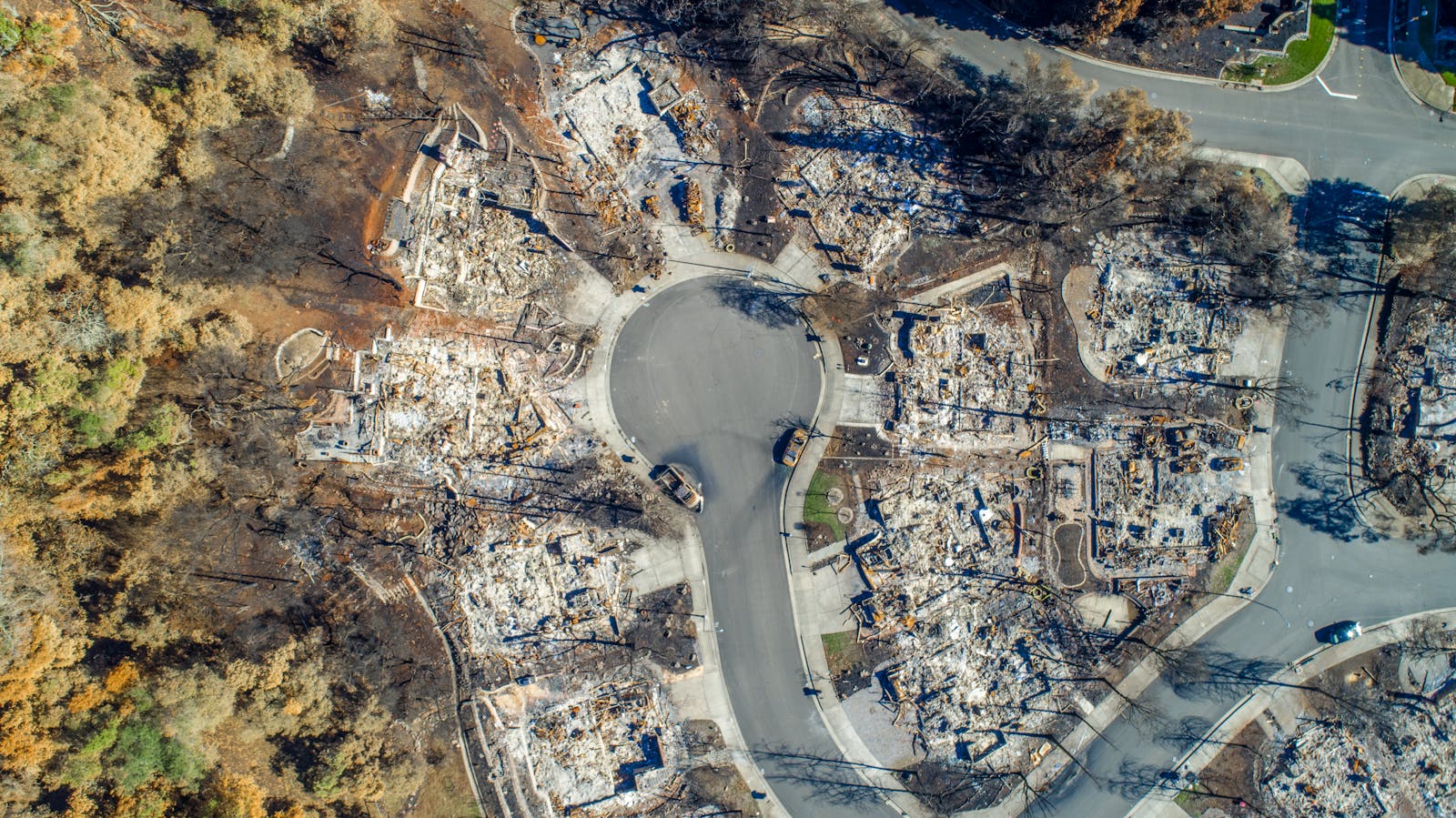People Are Fleeing These Climate Disaster Zones
 https://climate-crisis-247-bucket.nyc3.digitaloceanspaces.com/wp-content/uploads/2024/10/08002433/2990610-150x150.jpg
https://climate-crisis-247-bucket.nyc3.digitaloceanspaces.com/wp-content/uploads/2024/10/08002433/2990610-150x150.jpgClimate scientists have warned for decades that rising seas, dangerous heat waves, and other increasingly frequent severe weather events will create a shift in domestic migration and dramatically change urban settlement patterns throughout the United States. As thousands of Americans remain displaced in the wake of recent Hurricanes Helene and Milton, we are starting to see climate change reshape the U.S. population in real time.
Going green? The 25 Best Cities For Sustainable Construction
Worst hurricane ever? How Helene And Milton Rank Among The Fastest Wind Speeds Ever Recorded
Researchers believe that climate will induce a shift in population on a scale similar to the Great Migration in the 20th century, and that this change is already happening. A look at climate hazard risk and recent population change reveals a list of disaster-prone cities and counties that Americans are fleeing in droves.
To determine the climate disaster zones people are fleeing, Climate Crisis 247 reviewed data on natural disaster risk from FEMA, climate risk from NASA, and migration from the U.S. Census Bureau. Counties that are considered relatively high or very high risk of natural disaster by FEMA – including avalanche, coastal flooding, cold wave, drought, earthquake, hail, heat wave, hurricane, ice storm, landslide, lightning, riverine flooding, strong wind, tornado, tsunami, volcanic activity, wildfire, and winter weather – were ranked based on population change due to net migration from 2020 to 2023. Only counties with hazards ranked as 0.30 or higher in NASA’s climate risk projections for 2040 to 2049 – which considers forecasted temperature and precipitation change – were included.
25. Pierce County, WA

- Population change due to net migration, 2020 to 2023: -2,521 residents
- FEMA National Risk Index: 98.7/100 (Relatively high)
- Total population: 928,696
- County seat: Tacoma
24. Imperial County, CA

- Population change due to net migration, 2020 to 2023: -3,434 residents
- FEMA National Risk Index: 98.1/100 (Relatively high)
- Total population: 179,057
- County seat: El Centro
23. Middlesex County, NJ

- Population change due to net migration, 2020 to 2023: -5,605 residents
- FEMA National Risk Index: 95.9/100 (Relatively high)
- Total population: 863,623
- County seat: New Brunswick
22. Oakland County, MI

- Population change due to net migration, 2020 to 2023: -6,451 residents
- FEMA National Risk Index: 96.1/100 (Relatively high)
- Total population: 1,270,426
- County seat: Pontiac
21. Sonoma County, CA

- Population change due to net migration, 2020 to 2023: -6,755 residents
- FEMA National Risk Index: 99.2/100 (Relatively high)
- Total population: 481,812
- County seat: Santa Rosa
20. Washington County, OR

- Population change due to net migration, 2020 to 2023: -8,381 residents
- FEMA National Risk Index: 97.5/100 (Relatively high)
- Total population: 598,865
- County seat: Hillsboro
19. Santa Cruz County, CA

- Population change due to net migration, 2020 to 2023: -9,872 residents
- FEMA National Risk Index: 97.6/100 (Relatively high)
- Total population: 261,547
- County seat: Santa Cruz
18. San Bernardino County, CA

- Population change due to net migration, 2020 to 2023: -11,965 residents
- FEMA National Risk Index: 99.9/100 (Very high)
- Total population: 2,195,611
- County seat: San Bernardino
17. Santa Barbara County, CA

- Population change due to net migration, 2020 to 2023: -12,885 residents
- FEMA National Risk Index: 99.4/100 (Relatively high)
- Total population: 441,257
- County seat: Santa Barbara
16. Calcasieu Parish, LA

- Population change due to net migration, 2020 to 2023: -12,926 residents
- FEMA National Risk Index: 96.9/100 (Relatively high)
- Total population: 203,761
- County seat: Lake Charles
15. Davidson County, TN

- Population change due to net migration, 2020 to 2023: -14,638 residents
- FEMA National Risk Index: 96.5/100 (Relatively high)
- Total population: 712,334
- County seat: Nashville
14. Monterey County, CA

- Population change due to net migration, 2020 to 2023: -16,674 residents
- FEMA National Risk Index: 98.4/100 (Relatively high)
- Total population: 430,723
- County seat: Salinas
13. Ventura County, CA

- Population change due to net migration, 2020 to 2023: -20,266 residents
- FEMA National Risk Index: 99.4/100 (Relatively high)
- Total population: 829,590
- County seat: Ventura
12. Jefferson Parish, LA

- Population change due to net migration, 2020 to 2023: -20,491 residents
- FEMA National Risk Index: 98.2/100 (Relatively high)
- Total population: 421,777
- County seat: Gretna
11. King County, WA

- Population change due to net migration, 2020 to 2023: -22,393 residents
- FEMA National Risk Index: 99.7/100 (Very high)
- Total population: 2,271,380
- County seat: Seattle
10. Salt Lake County, UT

- Population change due to net migration, 2020 to 2023: -22,771 residents
- FEMA National Risk Index: 99.0/100 (Relatively high)
- Total population: 1,185,813
- County seat: Salt Lake City
9. Miami-Dade County, FL

- Population change due to net migration, 2020 to 2023: -26,597 residents
- FEMA National Risk Index: 99.8/100 (Very high)
- Total population: 2,686,867
- County seat: Miami
8. Multnomah County, OR

- Population change due to net migration, 2020 to 2023: -27,616 residents
- FEMA National Risk Index: 98.6/100 (Relatively high)
- Total population: 789,698
- County seat: Portland
7. San Mateo County, CA

- Population change due to net migration, 2020 to 2023: -44,739 residents
- FEMA National Risk Index: 99.3/100 (Relatively high)
- Total population: 726,353
- County seat: Redwood City
6. Dallas County, TX

- Population change due to net migration, 2020 to 2023: -57,341 residents
- FEMA National Risk Index: 99.1/100 (Relatively high)
- Total population: 2,606,358
- County seat: Dallas
5. San Diego County, CA

- Population change due to net migration, 2020 to 2023: -65,280 residents
- FEMA National Risk Index: 99.7/100 (Very high)
- Total population: 3,269,973
- County seat: San Diego
4. Orange County, CA

- Population change due to net migration, 2020 to 2023: -72,500 residents
- FEMA National Risk Index: 99.8/100 (Very high)
- Total population: 3,135,755
- County seat: Santa Ana
3. Alameda County, CA

- Population change due to net migration, 2020 to 2023: -77,044 residents
- FEMA National Risk Index: 99.9/100 (Very high)
- Total population: 1,622,188
- County seat: Oakland
2. Santa Clara County, CA

- Population change due to net migration, 2020 to 2023: -80,613 residents
- FEMA National Risk Index: 99.8/100 (Very high)
- Total population: 1,877,592
- County seat: San Jose
1. Los Angeles County, CA

- Population change due to net migration, 2020 to 2023: -395,972 residents
- FEMA National Risk Index: 100.0/100 (Very high)
- Total population: 9,663,345
- County seat: Los Angeles
Sponsor
Find a Vetted Financial Advisor
- Finding a fiduciary financial advisor doesn't have to be hard. SmartAsset's free tool matches you with up to 3 financial advisors that serve your area in 5 minutes.
- Each advisor has been vetted by SmartAsset and is held to a fiduciary standard to act in your best interests. Get on the path toward achieving your financial goals!
